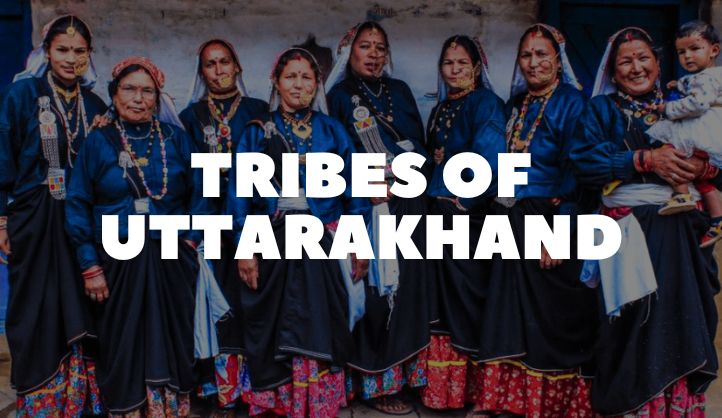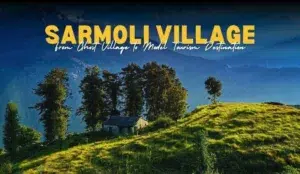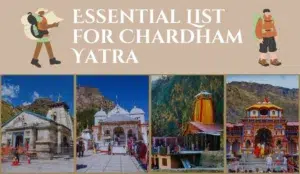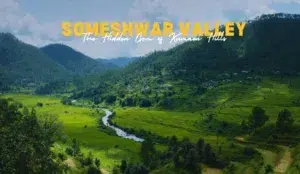Nestled in the majestic Himalayas, Uttarakhand is a land not only of breathtaking landscapes but also of vibrant tribal cultures. These indigenous communities, residing primarily in the foothills and valleys, have safeguarded their unique traditions and customs for centuries. This blog delves into the lives of the various tribes of Uttarakhand, exploring their history, way of life, and the rich tapestry they weave into the fabric of the state.
The Five Major Tribes
Uttarakhand boasts five major tribal groups, each with its own distinct identity:
-
Jaunsari Tribe: The largest tribal community of Uttarakhand, the Jaunsaris inhabit the lower Himalayan regions of Garhwal. Known for their agricultural prowess and expertise in weaving, they practice polyandry in some sections. Their vibrant festivals like “Buksha” and “Nawami” showcase their rich folklore and music.
-
Tharu Tribe: Primarily residing in the Terai region bordering the plains, the Tharus are known for their distinctive language and earthy cultural practices. Skilled hunters and gatherers, they are also adept at crafting bamboo products and have a deep connection with nature. Their lively festivals like “Maghe Sankranti” and “Chaitra Sankranti” are a vibrant display of their traditions.
-
Raji Tribe: Found in the foothills of the Shivalik range, the Rajis, also known as Van Rawats, are a semi-nomadic tribe. They have a deep understanding of medicinal plants and are skilled in hunting and gathering. Their festivals like “Maikula” and “Chaitra” celebrate their connection with the forest and their deities.
-
Buksa Tribe: Primarily inhabiting the lower Himalayan regions of Kumaon, the Buksas are known for their expertise in agriculture and animal husbandry. Their traditional attire reflects their distinct identity, and their festivals like “Harela” and “Baikunth Chaturdashi” showcase their rich heritage.
-
Bhotiya Tribe: Residing in the higher Himalayan regions bordering Tibet, the Bhotiyas are a community of pastoralists and traders. They are known for their unique polyandrous practices and their skill in rearing sheep and goats. Their festivals like “Teej” and “Gauchar” reflect their deep connection with the mountains and their way of life.
These are just the five major tribes, Uttarakhand also has several smaller indigenous groups like the Mahigeers and Van Gujjars, each contributing to the state’s cultural tapestry.
A Glimpse into Tribal Life
Life for the tribes of Uttarakhand revolves around a deep respect for nature and a strong sense of community. Their traditional occupations include agriculture, animal husbandry, hunting, gathering, and crafting. Each tribe has its own unique language, dialect, and style of clothing that reflects their cultural heritage.
The social structure within the tribes is often based on a system of clans and village councils. They have a rich oral tradition of storytelling, music, and dance that is passed down through generations. Their customs and rituals are intricately linked to their beliefs and the natural world surrounding them.
Challenges Faced by the Tribes
Despite their rich heritage, the tribes of Uttarakhand face several challenges in the modern era. Encroachment on their traditional lands, deforestation, and lack of access to education and healthcare pose significant threats to their way of life. Additionally, issues like migration and modernization can lead to a dilution of their cultural practices.
Efforts for Preservation and Development
The government and various NGOs have undertaken initiatives to protect the cultural heritage and promote the well-being of the tribes. These efforts include:
- Reservation in education and government jobs
- Establishment of tribal welfare schemes
- Promotion of ecotourism opportunities in tribal areas
- Setting up craft centers to support traditional artisans
These initiatives aim to empower the tribes and ensure their sustainable development while preserving their unique culture.
Some ways you can learn more about the tribes of Uttarakhand
-
Visit Tribal Villages: Responsible ecotourism initiatives allow you to experience tribal life firsthand. Homestays in tribal villages offer a glimpse into their daily routines, customs, and cultural practices.
-
Explore Tribal Arts and Crafts: The tribes of Uttarakhand are renowned for their exquisite craftsmanship. From intricate Jaunsari shawls to hand-woven Tharu baskets, these beautiful products provide a window into their cultural heritage. Look for government-run emporiums or visit local craft fairs to support tribal artisans.
-
Attend Tribal Festivals: Immerse yourself in the vibrant culture of the tribes by attending their festivals. Witness the electrifying dance performances, lively music, and traditional ceremonies that celebrate their beliefs and way of life. Be sure to be a respectful observer and dress modestly.
-
Museums and Cultural Centers: Several museums and cultural centers in Uttarakhand showcase tribal artifacts, clothing, and tools. The Tribal Welfare Museum in Dehradun offers a comprehensive overview of the tribes and their way of life.
-
Documentaries and Books: Explore documentaries and books on the tribes of Uttarakhand. These resources provide in-depth information on their history, traditions, and the challenges they face.
By taking these steps, you can gain a deeper appreciation for the rich tapestry woven by the tribes of Uttarakhand. Their unique culture and traditions are an integral part of the state’s identity, and their preservation is essential for a truly inclusive and diverse India.
Conclusion
The tribal communities of Uttarakhand are the custodians of a rich cultural heritage that has been passed down through generations. Their way of life reflects a deep respect for nature and a strong sense of community. By appreciating and supporting their traditions, we can ensure that these vibrant cultures continue to thrive in the years to come.
FAQs
1. What is the largest tribal group in Uttarakhand?
The Jaunsari tribe is the largest tribal community in Uttarakhand.
2. What are some of the languages spoken by the tribes?
Each tribe has its own unique language or dialect. Some commonly spoken languages include Jaunsari, Tharu, and Bhotia.
3. What are some of the popular festivals celebrated by the tribes?
There are numerous festivals celebrated by the tribes throughout the year. Some popular examples include Buksha (Jaunsari), Maghe Sankranti (Tharu), and Teej (Bhotiya).
4. Is it appropriate to take photographs of tribal people?
Always ask permission before taking photographs. Be respectful of their privacy and avoid taking intrusive pictures. If someone declines, don’t be offended. You can offer to take a picture with them if you’d like a memento.
5. What are some things to keep in mind when visiting a tribal village?
- Dress modestly. Avoid wearing revealing clothing that might be considered disrespectful.
- Be mindful of your behavior. Avoid loud noises, littering, or any actions that could disrupt the peaceful environment.
- Ask before touching anything. Sacred objects or personal belongings should not be touched without permission.
- Support the local economy. Purchase handicrafts directly from artisans or participate in responsible tourism initiatives.
- Leave no trace. Dispose of your waste properly and respect the natural surroundings.





